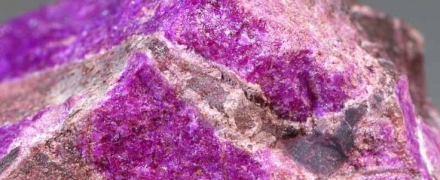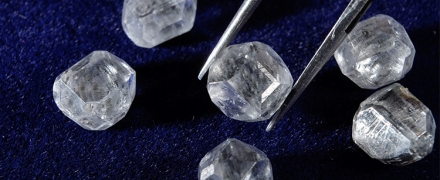open 10 am - 7 pm
laboratory is closed
Sogdianite on the finger

Recently, a ring with a cabochon of a pale pink translucent mineral, which was declared as spinel, was provided to our laboratory for examination. But when measuring optical constants, it turned out that the stone did not look like spinel at all, but corresponded to sogdianite. Then, after conducting confirmatory studies, there was no doubt that it was Sogdianite. Sogdianite is a rather rare mineral and more often it can be found as a collection material (moreover, in systematic collections), and it is extremely rare in jewelry. Sogdianite was found by Vyacheslav Dzhuraevich Dusmatov (1936-2004) in moraine deposits of the Dara-i-Pioz (Darai-Pioz) glacier in Tajikistan and was registered in 1968 as a new mineral. The mineral was named after the historical region - Sogd (Sogdiana), located between the Amu Darya and Syr Darya rivers on the territory of modern Tajikistan and Uzbekistan, historically based on the fertile lands of the Zarafshan (Zerafshan) river valley, in the upper reaches of which is the Dara-i-Pioz (Darai- Piez). In terms of its hardness (7 on the Mohs scale), it is quite suitable for use as a jewelry stone, but perfect cleavage requires caution when processing this material, in addition, one has to take into account the high natural fracturing of most of the excretions of this mineral. Transparent crystals of any significant size are extremely rare and are of greater interest as a collection material than cutting raw materials. But the translucent material, as we could see, can be used in the manufacture of jewelry inserts (and even sold as low-grade spinel).
В геммологической практике бывают весьма увлекательные случаи с диагностикой ювелирных вставок
Но помимо редкости цвета и высокой стоимости таких камней, многие розовые камни выделяются одной замечательной особенностью – они проявляют плеохроизм, то есть в зависимости от положения осмотра камня он может иметь дополнительные оттенки – оранжевый или пурпурный.
Currently, gemstones are produced by two fundamentally different technological methods - the High Pressure - High Temperature method (“HPHT”, High-pressure & High-temperature) and the Chemical Vapor Deposition (“CVD”, Chemical vapor deposition) method. The "HPHT" method is the most tested classical synthesis method, which can be used both carbon deposition on diamond from flux melts and catalytic reactions. In "CVD" synthesis, diamond growth occurs on a seed during carbon deposition mainly from a gaseous medium at relatively low temperatures and pressures.
Jewelry and precious stones are just such a category of goods, when buying which you need to pay attention to many criteria.
Tauson Lev Vladimirovich (October 27, 1917 - November 23, 1989), an outstanding Soviet geologist and geochemist, member of the USSR Academy of Sciences (since 1981).






